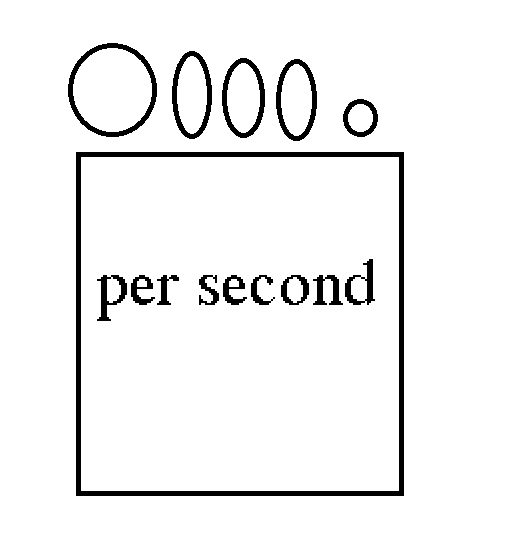rate of changes is literally just change over time i think
OH SHIT I KNOW THIS ONE
and by that I mean like I can kinda decipher whats on there i hate related rates so much
(<-- knows nothing else)
if you can explain related rates in better terms pls do
ok ill be real idk the math too well besides like its used to find the rate at which stuff is changing and you can relate them (i.e. the name)
the way I think about it is you are typically given an x, a y, and what the derivative of one of those are equal to and then are asked to find the other with respect to T
so you have 3 givens, x, y, and dy/dt (in this example), and you have to find a way to relate them. sometimes this is given, sometimes you have to use outside formulas like the area of a rectangle, etc etc
did you take those example notes or are those just notes you’re looking at bc i can explain whats going on in those notes but if you dont need that I won’t
y=x^2+3. x is some mystery function x(t). To find y’(t), just treat x as mystery function (like you might with implicit differentiation or the chain rule), differentiate y(t), and then plug in the known value for x(t) and x’(t).
y=x(t)^2+3
y’(t)=2x(t) * x’(t)
x(t)=1, x’(t)=5
y’(t)=2*1*5=10
Wow this is giving me flashbacks
I dont miss that shit at all
Related rates are just calculus word problems and they make a big deal of them like “here’s the Set Of Rules you do for related rates” but it’s no new memorisation. It’s literally just application of what you already knew. But they explain it like it’s some process to memorise because they’re stupid and expect you to be stupid instead of following normal people natural logic
And it makes everybody stress over them when there’s literally nothing to be stressed about
Alternative way to think about this:
Treat dy/dx as a fraction. Treat dx/dt as a fraction. Treat dy/dt as a fraction. You have three fractions.
You know how to find dy/dx, just differentiate y with respect to x. If y=x^2+3, then dy/dx=2x.
You are given dx/dt at your point of interest. It’s 5.
If you want to find dy/dt, you can just multiply dy/dx and dx/dt. The dx in the denominator of dy/dx and the dx in the denominator of dx/dt cancel out. Like normal fractions.
dy/dx = dy/dx * dx/dt = 2x * 5 = 10x = 10.
thanks
this makes the most sense i think i maybe got it
If you ever don t know anything about derivatives juts pretend theyre fractions until it works out
area = pi x r^2
differentiate with respect to time
dA/dt = 2 x pi x r x dr/dt
dr/dt is given as 5 feet/s
r is given as 13 feet
dA/dt = 2 x pi x 13 x 5
whatever number this gives idk but you get the point
Ultimate Police Officer vs Ultimate Maid. Who would win?
square feet per second sure is a unit
thank you america
you’re given two numbers, one being DR/DT and one being the raidus and are told to find DA/DT
you know that it’s DR/DT because it’s the radius of the cricle increasing over time, and you’re asked to find the area changing over time
so you find an equation that relates area and the radius (aka pi*r^2) and can take the derivative of that with respect to time
you turn A=pi * r^2 into DA/DT = 2 pi *r * dr/dt
you’re already given the radius at that point (13) and the dr/dt (5) so you plug those in and voila, you have something equal to DA/DT which is what the problem asked for
pi may seem like a variable but its secretly a constant so it just kinda vibes there
im coooooked

